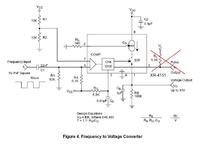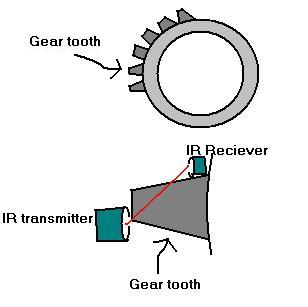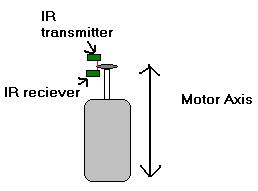umery2k75
Advanced Member level 1
lm2907 response time
This is the circuit, which I have made for frequency to voltage converter.I'm using this to measure the speed of the DC motor.I am using LM2907 frequency to voltage converter IC.

So, after making this circuit, then next thing to do was to find the sensor, then I went to market and bought magnetic sensor.This is the magnetic sensor, the other part was also same like this.
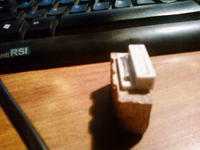
The functioning of this magnetic was something like this.
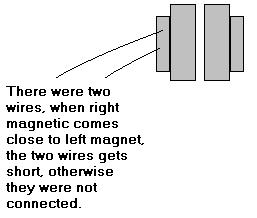
Then I start the motor and started increasing the speed of it, I was expecting a linear increase in voltage, or in otherwords I was expecting this curve output.
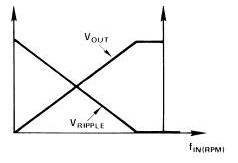
but I didn't get it.So I realize what could be wrong with my sensor, so at the end I realize it was basically a magnetic door sensor, which I bought from the market.I should have some another sensor, then I removed that sensor from my circuit.
I went to the market again to look for right sensor, that looks similar to this one as given on datasheet.

then I found a shop where, these kinds of sensor were available and were of many sizes, they were named as Proximity sensor in that shop.Although in Datasheet the name of sensor is written as "Variable Reluctance Magnetic Pickup".Although one day before this day,I had gone to the market and had asked for "Variable Relucatnce Magnetic Pickup", but nobody knew to what I was asking for, so I couldn't get that sensor on that day.
So I bought one proximity sensor and attached to the mechanical assembly of my project.Like this

when I was to attach the sensor wires to my circuit.I realized that there were three wires coming from the sensor!
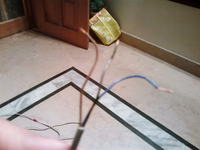
In the datasheet, sensor has only two wires.
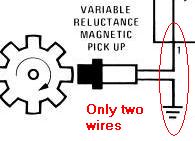
In datasheet of LM2907 it's not clearly written what kind of sensor is to be used.I'm not still sure whether I need to use proximity sensor or not.I had bought the proximity sensor, because it was the only sensor in the market that resembles the most as given on datasheet.I had spent several hours in market looking for the sensor that looks exactly the same as given in datasheet.
Things I need to confirm about this:
A)Do you think Variable Reluctance Magnetic Pickup as mentioned on Datasheet is also called as Proximity sensor?
B)Secondly, I want to know if I had bought the correct sensor(proximity sensor), so why my sensor has 3 wires, it should have two wires like the one shown in datasheet.
Project:
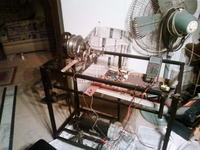
This is the circuit, which I have made for frequency to voltage converter.I'm using this to measure the speed of the DC motor.I am using LM2907 frequency to voltage converter IC.

So, after making this circuit, then next thing to do was to find the sensor, then I went to market and bought magnetic sensor.This is the magnetic sensor, the other part was also same like this.

The functioning of this magnetic was something like this.

Then I start the motor and started increasing the speed of it, I was expecting a linear increase in voltage, or in otherwords I was expecting this curve output.

but I didn't get it.So I realize what could be wrong with my sensor, so at the end I realize it was basically a magnetic door sensor, which I bought from the market.I should have some another sensor, then I removed that sensor from my circuit.
I went to the market again to look for right sensor, that looks similar to this one as given on datasheet.

then I found a shop where, these kinds of sensor were available and were of many sizes, they were named as Proximity sensor in that shop.Although in Datasheet the name of sensor is written as "Variable Reluctance Magnetic Pickup".Although one day before this day,I had gone to the market and had asked for "Variable Relucatnce Magnetic Pickup", but nobody knew to what I was asking for, so I couldn't get that sensor on that day.
So I bought one proximity sensor and attached to the mechanical assembly of my project.Like this

when I was to attach the sensor wires to my circuit.I realized that there were three wires coming from the sensor!

In the datasheet, sensor has only two wires.

In datasheet of LM2907 it's not clearly written what kind of sensor is to be used.I'm not still sure whether I need to use proximity sensor or not.I had bought the proximity sensor, because it was the only sensor in the market that resembles the most as given on datasheet.I had spent several hours in market looking for the sensor that looks exactly the same as given in datasheet.
Things I need to confirm about this:
A)Do you think Variable Reluctance Magnetic Pickup as mentioned on Datasheet is also called as Proximity sensor?
B)Secondly, I want to know if I had bought the correct sensor(proximity sensor), so why my sensor has 3 wires, it should have two wires like the one shown in datasheet.
Project:



